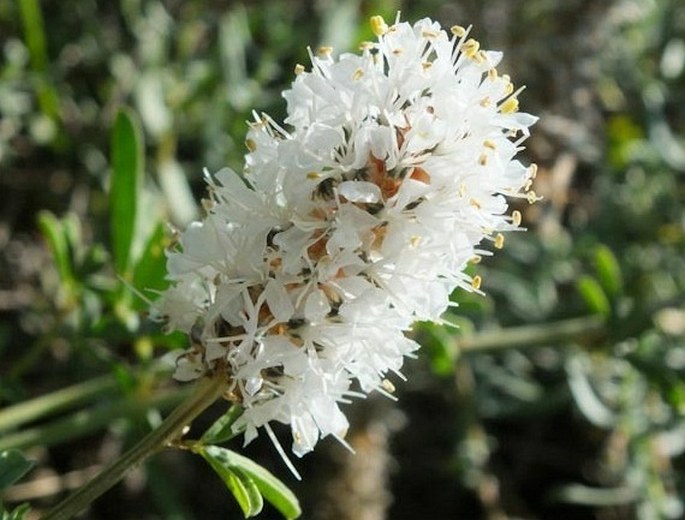Syn.: Kuhnistera candida (Willd.) Kuntze, Petalostemon candidum (Willd.) Michx., Petalostemon gracilis Nutt., Petalostemon virgatus Nees et Schwein., Psoralea candida (Willd.) Poir.
Family: Fabaceae Lindl.

Distribution: North American species found in a large area from the west of province of Ontario, south of Manitoba, Saskatchewan and Alberta through prairie states of USA (to the east to Tennessee and to the west to Arizona) and to northern Mexico ( Chihuahua, Durango, Sonora).
Ecology: Found in prairie, dry grasslands and rocky slopes. Blooms from May to August.
Description: Perennial herb, stem erect or prostrate, up to 80 cm long, single, poorly branched at top and woody. Leaves are alternate, bipinnately compound with 5–13 leaflets; leaflets linear to oblong or lance-shaped, 15–25 mm long, 2–3 mm wide, hairless. Flowers in terminal spike, crowded, 2–8 cm long; flowers 5-merous, 1–3 mm long, white. Fruit is a legume, small enclosed by sepals; seeds 1–2.
Usage: Native Americans used the leaves to prepare medicinal brew and chewed the roots for their sweetness.
Notes: The flowers of this genus are unusual in that 4 of the petals are actually modified stamens; the former genus name was Petalostemon which in Greek reflects this feature.


These images were taken in Canada, Alberta, Calgary, Confluence Park (August 5, 2013).


